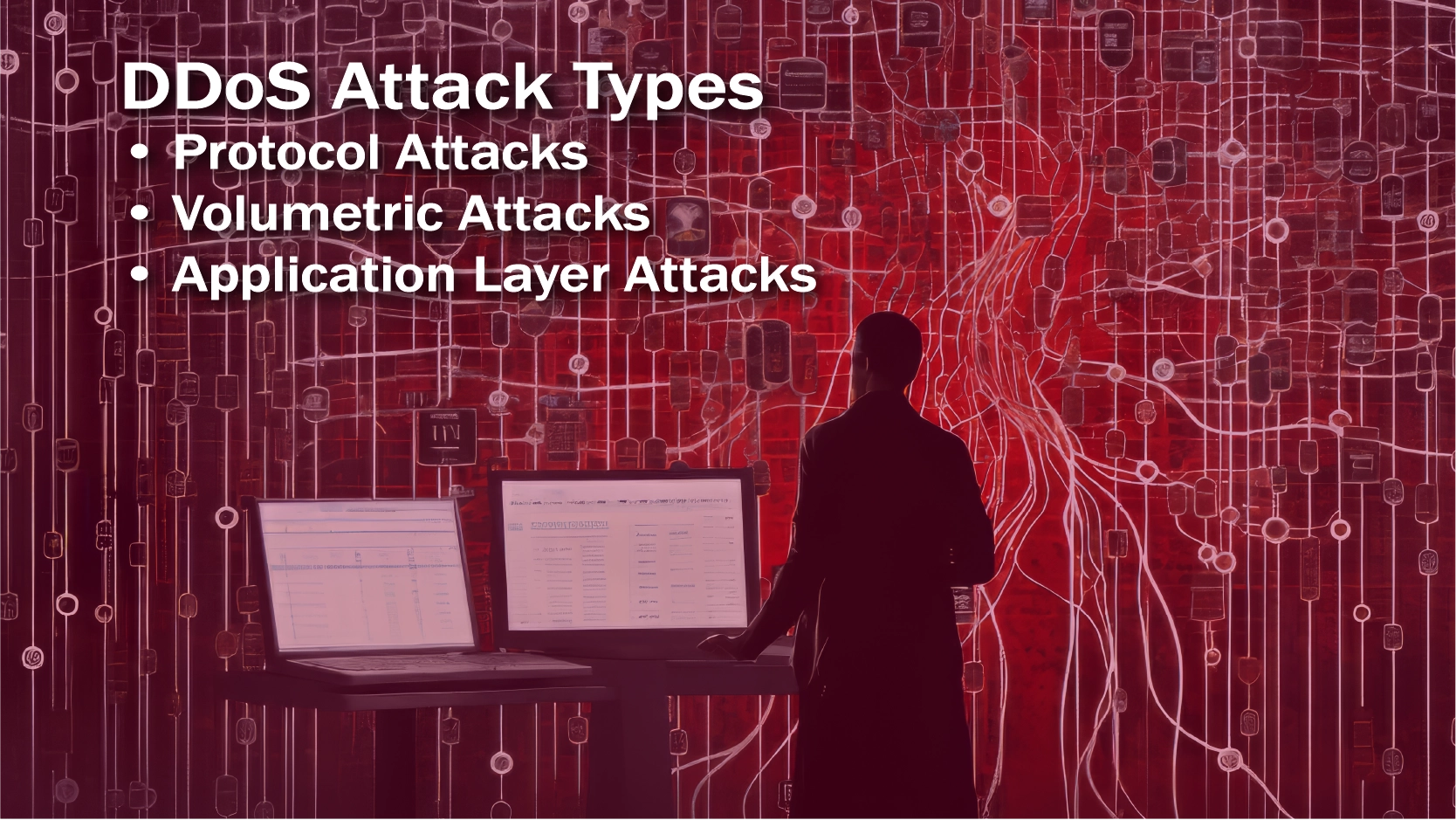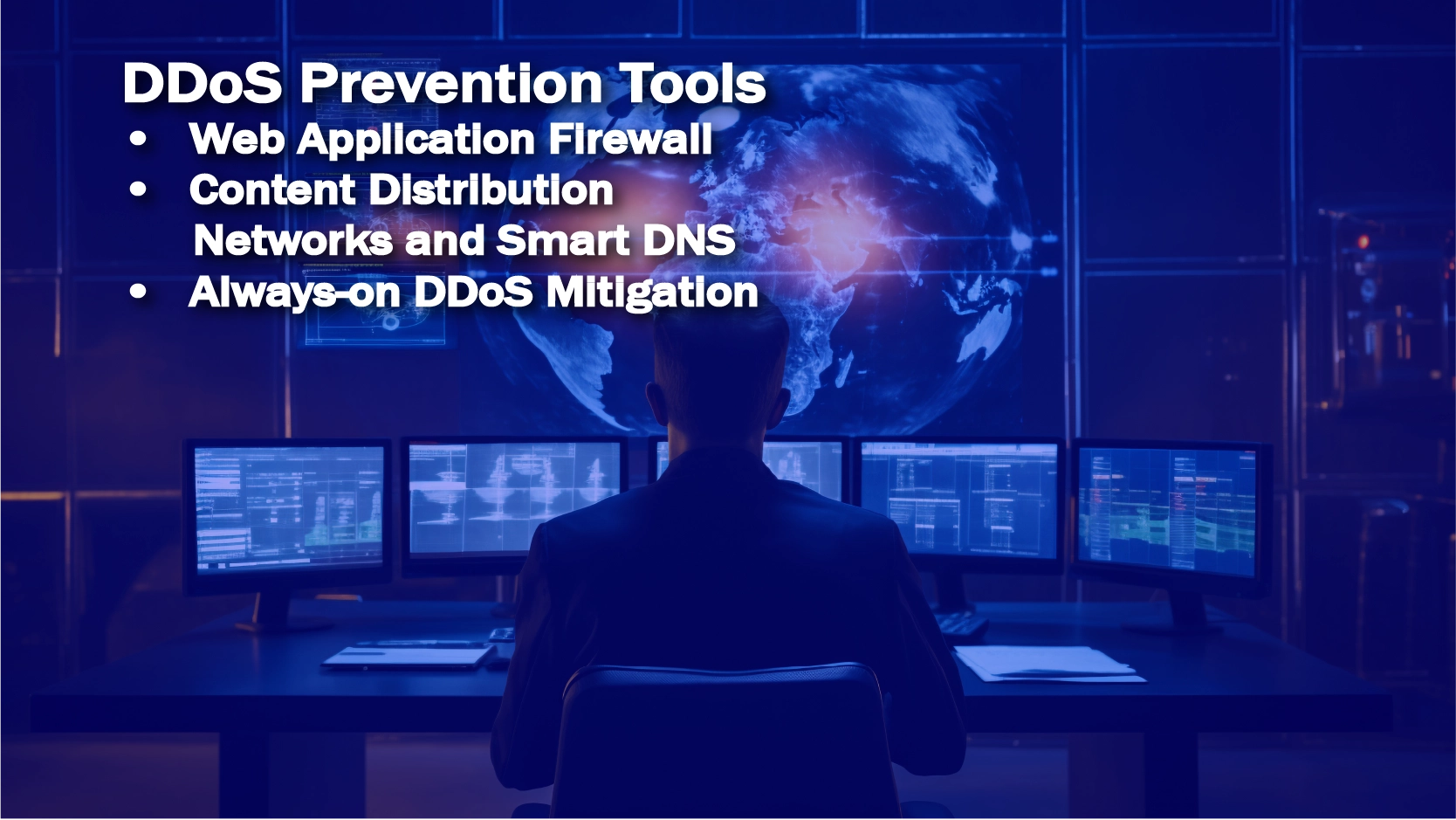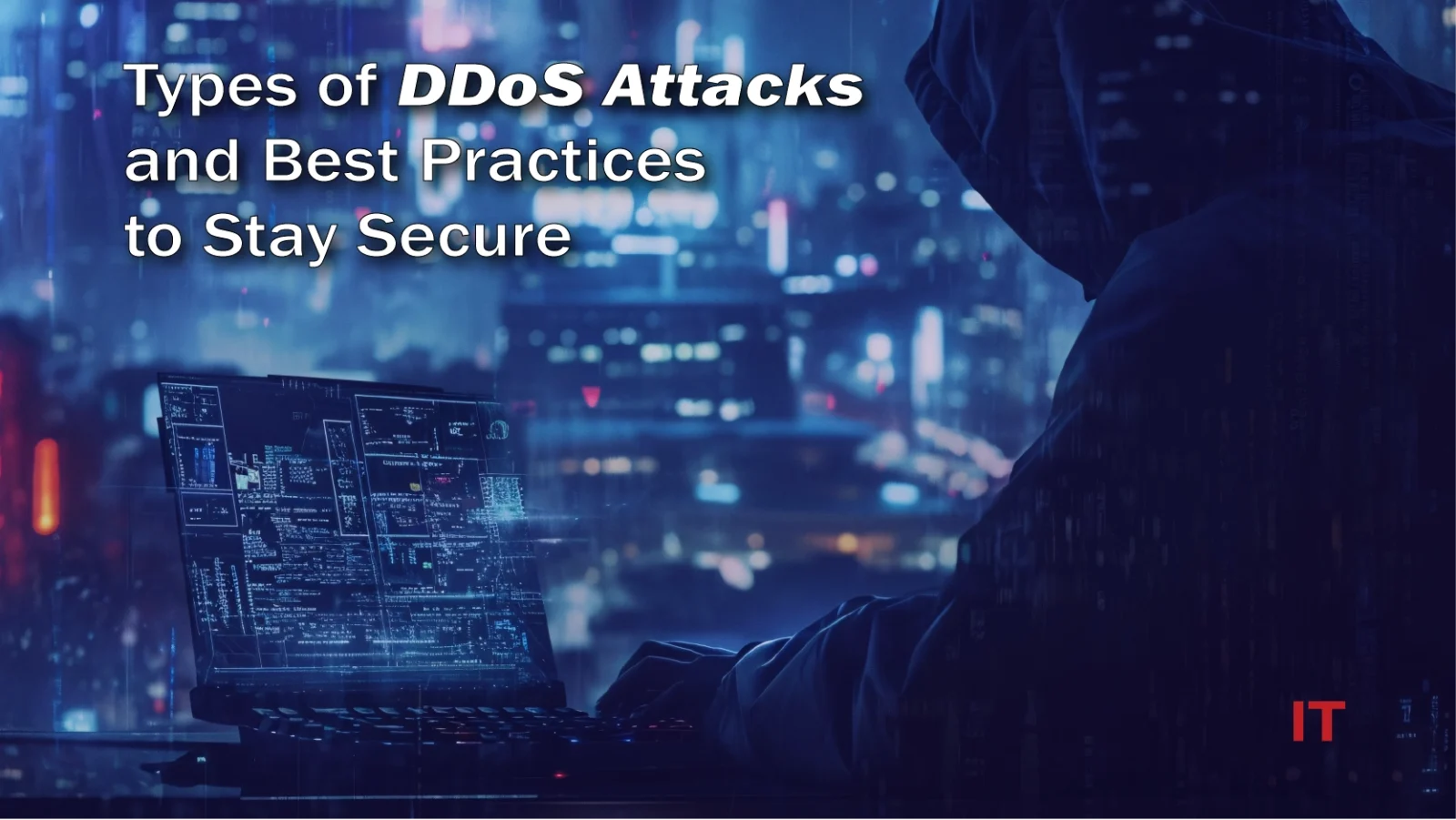Distributed denial-of-service (DDoS) attacks happen when malicious actors leverage a vast number of devices to overload the resources and restrict access to the assets for legitimate use. Cybercriminals usually use a DDoS attack against services, applications, and websites available on the internet. Moreover, DDoS attacks can be utilized against a particular gateway, internal network resources, and computer systems.
In order to mitigate DDoS Attacks, organizations first need to determine the difference between various DDoS attack types and their impact on the operations. In this blog, let us have a look at the impact of DDoS on organizations, its types, and prevention methods.
Impact of DDoS Attacks On Organizations
The aim of any DDoS attack is to cripple the business systems operations, which can have a heavy cost on the organization. IBM’s Cost of a Data Breach 2022 Report highlights the average cost of a cyberattack on an organization, resulting in disrupting the operations, system downtime, and other business interruptions, costing them around USD 1.42 million.
Another report by ZDNET, suggests a full-blown DDoS attack on Bandwidth.com cost them nearly USD 12 million.
One of the biggest DDoS attacks targeted a Microsoft Azure client in November 2021. This DDoS attack generated 3.47 terabits of malicious traffic per second. Cybercriminals leveraged a botnet of approximately 10,000 systems globally to target the victim with nearly 340 million packets every second.
Malicious threats are using DDoS only as a primary attack vector. Their main goal might be bigger and more vicious. They use this attack as a hoax to distract the victim from a more sophisticated cybercrime. The malicious goals can range from stealing data to deploying ransomware on the business network. The cybersecurity teams start working on mitigating the DDoS attack so that they cannot focus on the hidden agendas of these criminals.
The DDoS attack can cripple the business operations and result in significant losses. There are three common types of DDoS attacks that cybercriminals use to target the victim and accomplish their malicious goals.
DDoS Attack Types
 Despite the aim of executing a DDoS attack to overload the system with malicious traffic, the main goal might differ. Here are the three broad categories of DDoS attacks:
Despite the aim of executing a DDoS attack to overload the system with malicious traffic, the main goal might differ. Here are the three broad categories of DDoS attacks:
1. Protocol Attacks
Protocol attacks are on the prowl to exhaust server resources or the ones on its networking systems, such as load-balancers, firewalls, and routing engines. SYN flood attack is an example of a protocol attack.
TCP handshake is necessary before two computer systems can start a secure communication channel. TCP handshake is a mutual understanding between two parties to exchange preliminary data. A SYN packet is usually the initial step of a TCP handshake. It indicates that the server that the customer wants to initiate a new channel.
While executing a SYN attack, the malicious actors overwhelm the servers with multiple SYN packers. Each of the packets has a spoofed IP address. The server reacts to every packet through the SYN-ACKs to ask the client to accomplish the handshake. In this case, the clients will never respond, and the server remains hanging in waiting mode. Hence, the servers face downtime after waiting for a longer period of time for multiple responses.
Also Read: CISO’s Playbook To Enhance Operational Technology Cybersecurity
2. Volumetric Attacks
Volumetric attacks work by overwhelming a server with excessive traffic. It ultimately exhausts its bandwidth and renders, which makes it unable to function properly. One of the most notorious examples is the DNS amplification attack.
In this type of attack, the attacker sends a large number of requests to a DNS server, but instead of using their own IP address, they spoof the address of their intended target. The DNS server, unaware of the deception, replies to the target server with a flood of responses. When executed on a large scale, this wave of incoming DNS replies can bring the target server to its knees.
Organizations will always be at risk of being exploited by a DDoS attack, which can have a tremendous impact on their operations. Cybersecurity teams need to be very vigilant to identify the risks in their early stages and mitigate them to minimize the harm.
3. Application Layer Attacks
An application layer attack is when the server creates responses to an incoming client request. For instance, if a user searches http://www.abc.com/resources/ on their internet browser, an HTTP request is deployed to the server, requesting access to the resources page. Once the request is sent, the server will search for all the data on that page, package it in a response, and revert it back to the browser.
This fetching and packaging of information occurs on an application layer. An application layer attack happens when malicious attackers leverage various bots or machines to constantly ask for the same resource in the server, resulting in overwhelming it.
HTTP flood attacks are one of the most common types of application layer attacks. In this type of attack, cybercriminals simply keep sending multiple HTTP requests to a specific server utilizing various IP addresses. For instance, threat actors request the server to generate PDF documents again and again. As these criminals use a different IP address and other identifier in each request, the server is unable to detect that it is being attacked.
8 Best DDoS Mitigation Strategies
Following are a few best practices that cybersecurity professionals can consider to prevent their enterprise from severe DDoS attacks:
1. Assess the Risk
Enterprises need to constantly execute risk assessments and audits of all the devices, networks, and servers on the IT infrastructure. It will be challenging for organizations to entirely eliminate the risks of DDoS attacks. Cybersecurity teams should have a thorough understanding of the strengths and weaknesses of the organization’s hardware and software assets. Determining the most vulnerable segments of the network forms the basis of implementing a DDoD mitigation strategy that will reduce the impact and disruption of a potential DDoS attack.
2. Constant Adaptive Threat Monitoring
Log monitoring plays a critical role in identifying potential threats by continuously analyzing network traffic patterns. It helps detect unusual spikes in traffic or other suspicious activity, allowing the system to adapt and defend against anomalous or malicious requests, protocols, and IP addresses in real time.
3. Develop a Scalable DDoS Mitigation Plan
There are two main considerations for mitigating massive-scale volumetric attacks:
● Transit capacity:
While developing an application architecture, it is crucial to ensure that the hosting provider offers enough redundant internet connectivity, which enables the organization to manage huge volumes of traffic. The main goal of a DDoS attack is to impact the accessibility of resources and applications. Organizations need to locate them close to their end users and large internet exchanges that allow your users easy access to the applications even during high traffic volume.
● Server capacity
The Majority of DDoS attacks are volumetric attacks that consume a lot of resources. Hence it is crucial that enterprises have the agility to scale computational resources up and down as per the requirements. Security teams can either do this by executing it on massive computational resources or those with functionalities such as improved networking or expanded network resources that support larger volumes. Furthermore, it is suggested that load balancers be leveraged to constantly monitor and transfer resources to avoid overloading any one resource.
4. Minimize the Attack Surface Area
Restricting the attack surface area exposure can help reduce the impact of DDoS attacks. There are various methods to minimize the exposure. These include restricting traffic to specific geographic locations, using a load balancer to distribute incoming traffic more evenly, and restricting communication from applications, protocols, and outdated or unused ports.
5. Caching
Caching helps cybersecurity teams reduce the burden on servers by storing copies of frequently requested content. By using a content delivery network (CDN) to cache resources, fewer requests need to be handled by the organization’s origin servers. This alleviates server strain and makes it harder for them to be overwhelmed by both legitimate and malicious requests.
6. Blackhole Routing
One effective way accessible to all network administrators is to virtually develop a black hole route and funnel traffic through that route. When security teams enforce a blackhole filtering technique without any particular criteria, both legitimate and malicious traffic on the network is directed to a null route or a blackhole. At the end, the traffic will be dropped off from the network. If an Internet asset is being a victim of a DDoS attack, the asset’s Internet service provider (ISP) might transfer all the site’s traffic into the black hole as a defense mechanism. However, it is not the best solution available; because it helps attackers to achieve their desired goals by making the network inaccessible.
7. Anycast Network Diffusion
Leveraging an Anycast network assists organizations in expanding their surface areas so that it has the ability to seamlessly absorb volumetric traffic spikes and avoid downtime by distributing traffic throughout various dispersed servers.
8. Rate Limiting
Rate limiting controls the volume of traffic allowed from specific IP addresses over a set period, preventing servers from being overloaded. This method is particularly effective at stopping Distributed Denial of Service (DDoS) attacks, where botnets flood an endpoint with an excessive number of requests. By limiting the rate of incoming traffic, the system can prevent such attacks before they cause major disruptions.
Other than these strategies to mitigate DDoS attacks, there are multiple DDoS prevention tools available to help enterprises eliminate the risks.
DDoS Prevention Tools
 Given below are a few tools that can assist cybersecurity teams to enhance their security posture and minimize the impact of DDoS attacks:
Given below are a few tools that can assist cybersecurity teams to enhance their security posture and minimize the impact of DDoS attacks:
1. Web Application Firewall (WAF)
A Web Application Firewall (WAF) protects web applications by filtering, inspecting, and blocking malicious HTTP traffic between the application and the internet. By leveraging customizable security policies, a WAF allows organizations to control and restrict incoming traffic from specific locations and IP addresses. It enforces both positive and negative security models, ensuring that only safe traffic reaches the web application while keeping out potential threats.
2. Implement Content Distribution Networks (CDNs) and Smart DNS Resolution Services
Implementing CDNs and smart DNS resolution services can enhance the security of web applications by offering an extra layer of network infrastructure for serving content and resolving DNS queries from locations that are closer to the end users.
3. Always-on DDoS Mitigation
An always-on DDoS mitigation service continuously monitors network traffic to identify and respond to potential DDoS attacks. These providers implement real-time policy adjustments to counter emerging attack patterns and rely on a vast network of data centers to absorb and deflect malicious traffic. When choosing a cloud-based DDoS mitigation provider, it’s crucial to select one that offers adaptive, scalable, and continuous protection against both sophisticated and volumetric attacks.
Mitigating DDoS Attacks In a Nutshell
Preventing an organization from an ongoing DDoS attack can be challenging for the security teams. It might restrict legitimate users from accessing the resources or assets when required. Hence, it is crucial for enterprises to take proactive measures to prevent their assets from DDoS attacks and its crippling impacts. Security teams need to develop and enforce an emergency DDoS incident response plan to minimize the risk exposed by such risks.

































